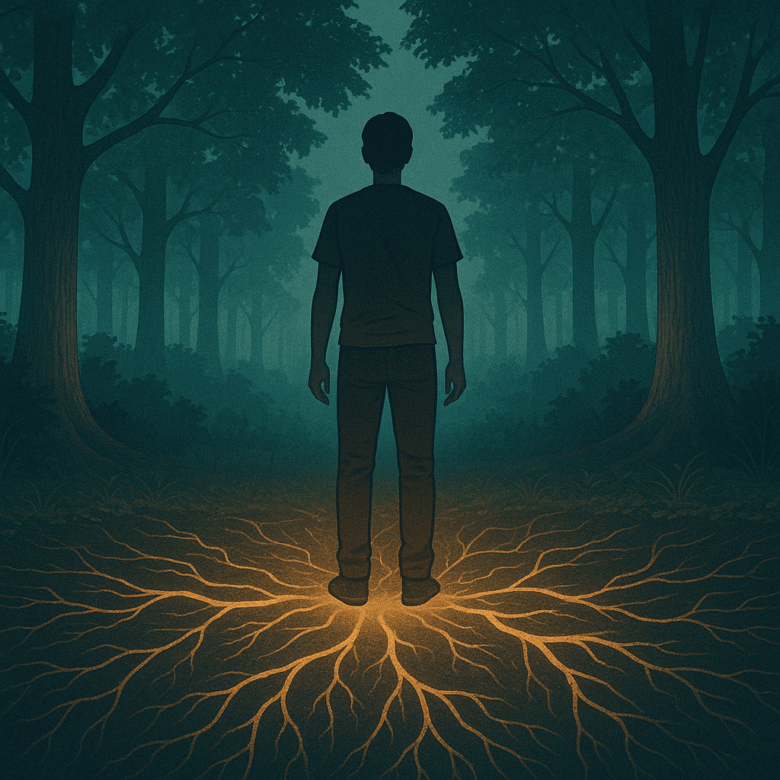Did you know that a single ant colony can stretch across thousands of kilometres, making it one of the largest “organisms” on Earth?
Welcome to The Secret Social Lives of Ants, Trees, and Fungi—a story that forces us to rethink what “society” really means. We often reserve the word for humans, imagining cities, WhatsApp groups, and crowded markets. But in the hidden corners of forests and beneath our feet, there exists an even older, wiser network of cooperation, bargaining, and survival. And honestly? It might put our human societies to shame.
Ants: Masters of Collective Intelligence
Ants are not just tiny insects marching in neat lines. They are living proof that brains aren’t always necessary for brilliance. An individual ant is not particularly smart—but put millions together, and they can farm, build skyscraper-like mounds, and even wage wars that rival human empires.
The Fungus Farmers: Some species, like leafcutter ants, harvest leaves not to eat but to cultivate fungi—essentially running underground farms. Each caste in the colony has a clear duty—some gather food, others defend, some care for the young, and a few even handle waste. It’s organized labour without trade unions.
Super colonies: The Argentine ant has created sprawling super colonies across continents. These ants recognize each other as family despite living thousands of kilometres apart. Imagine Delhi and Tokyo residents cooperating seamlessly without passports or visas.
Communication: Their “WhatsApp” is chemical pheromones. Through scent trails, ants gossip, send alerts, and even deceive rival colonies.
Provocative thought: If ants can manage super colonies without a single “president,” what does that say about our obsession with political leadership?
Trees: The Silent Elders of the Forest
Trees look solitary, but they are anything but. Beneath the ground, their roots tap into massive underground highways built of fungi—the so-called “Wood Wide Web.”
Mother Trees: Research shows that large, older trees act as hubs, feeding younger saplings with nutrients through fungal networks. Without these silent caregivers, forests collapse.
Warning Systems: When under attack by pests, trees release airborne chemicals that warn nearby trees to boost their defences. It’s a bit like neighbours warning each other with a loud “Watch out!” when a thief shows up on the street.
Carbon Traders: Through root-fungus partnerships, trees exchange sugars for minerals, balancing the needs of the whole ecosystem. Some even “loan” carbon to struggling neighbours—a level of economic socialism most governments can’t achieve.
Provocative thought: While we cut down trees for paper contracts and money, the trees themselves are better at keeping promises of cooperation than we are.
Fungi: The Invisible Connectors
If ants are the workers and trees the elders, fungi are the secret messengers and brokers. Fungi form mycorrhizal networks (symbiotic partnerships with plant roots), creating an underground internet that allows life to thrive.
The Mycelium Network: These thread-like structures spread over kilometres, connecting multiple trees. They shuttle nutrients, water, and even distress signals. Scientists often call them “nature’s internet.”
Fungal Diplomats: Some fungi act as middlemen, deciding how much carbon they’ll deliver to which tree. In a way, fungi are the stockbrokers of the forest, distributing resources where they see fit.
Zombie Fungus: Insects aren’t spared either. Ophiocordyceps, the so-called “zombie fungus,” infects ants and manipulates their behaviour until they die in a position perfect for fungal growth. A reminder that not all social relationships are benevolent.
Provocative thought: We ridicule conspiracy theories about hidden controllers, but fungi literally run hidden systems that determine which trees live or die.
The Bigger Picture: Society Without Ego
What binds ants, trees, and fungi together? The absence of ego. Ants don’t hoard wealth for themselves. Trees don’t say, “This carbon is mine.” Fungi don’t scream for recognition. Their societies run on balance, reciprocity, and ruthless pragmatism.
Meanwhile, we humans argue about borders, privilege, and profit while wrecking the ecosystems that model sustainable cooperation. Perhaps we are not the peak of evolution but a loud, confused teenager in a family of ancient, wiser beings.
Conclusion
The Secret Social Lives of Ants, Trees, and Fungi remind us of an uncomfortable truth: survival depends not on individual power but on relationships. If ants can organize global empires, trees can nurse strangers, and fungi can knit continents together, then why do we humans struggle to cooperate on something as simple as climate change?
The next time you walk in a forest or see a line of ants on your kitchen counter, pause. You are looking at civilizations that existed long before us and may outlast us, too. Maybe, just maybe, it’s time we started taking social lessons from ants, trees, and fungi instead of believing we’re the only ones with wisdom to share.
Author’s Note
I wrote this piece not just as a reflection on nature but as a challenge to our human arrogance. The more I read about these hidden societies, the more I realized—we’re the noisy newcomers. Perhaps our survival depends on listening to those who were here first.
G.C., Ecosociosphere contributor.




